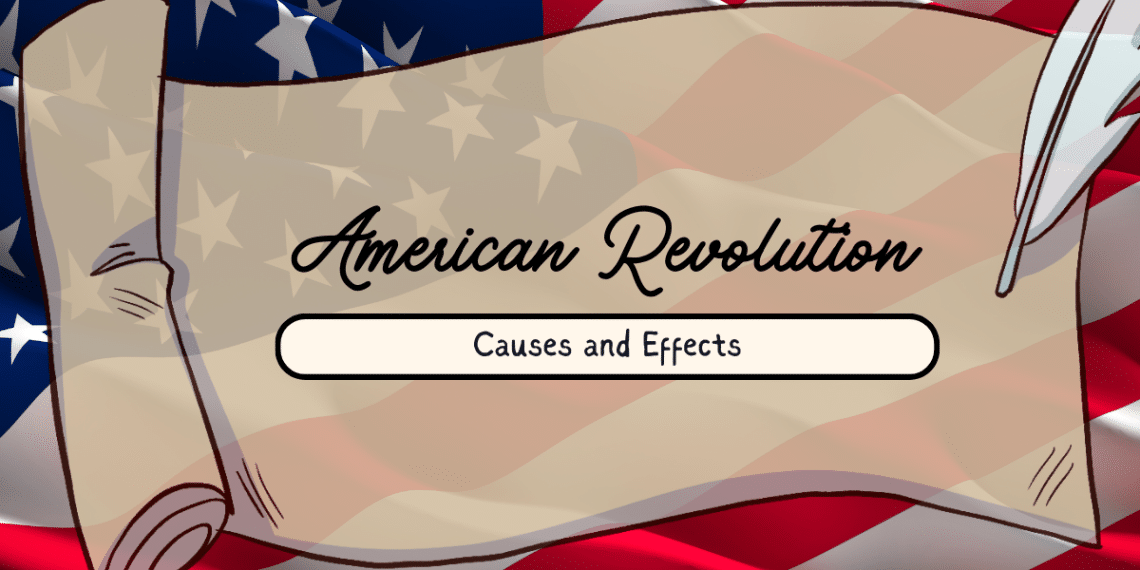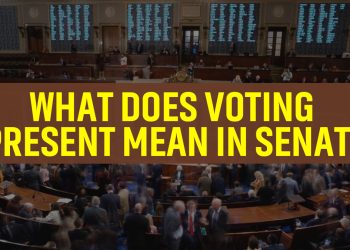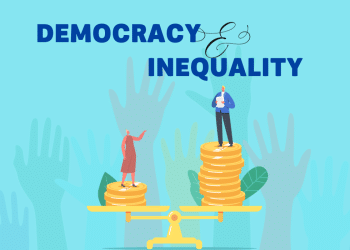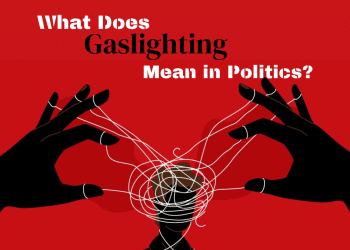The article delves into the intricate tapestry of American Revolution causes and effects, unraveling the socio-political tensions, ideological influences, and pivotal events that precipitated this watershed moment in history.
Picture the American Revolution as a grand tapestry woven from threads of discontent, philosophical pondering, and the occasional spark of audacity. It’s like the moment when a simmering pot finally boils over, but instead of a mere kitchen mishap, it reshaped the course of nations. In this journey, we’re peeling back the layers to reveal the “American Revolution causes and effects” quilted into history.
Think of this revolution as a spirited uprising, the colonies throwing off the British rule like a teenager asserting their independence from parental authority. There’s more to it than just teenage rebellion, though – we’re diving into a world where Enlightenment ideas collided with the weight of oppressive policies.
Overview: American revolution causes and effects
We’ve all heard about “taxation without representation,” but it’s like a chef insisting on picking your menu without asking your taste. The Sugar Act, the Stamp Act – it’s as if the British were trying to see just how many feathers they could ruffle. And oh, the Boston Tea Party, a defiant splash of rebellion in the form of soggy leaves.
Imagine being at the birth of radical ideas, a time when thinkers like Thomas Paine and John Adams were like intellectual sparks in a powder keg of change. These weren’t just fiery speeches; they were calls to arms, rallying cries for a new era.
Now, fast forward to battles in Lexington and Concord – it’s like the curtain rising on a theatrical showdown, a prelude to a full-blown war that was as much about ideals as it was about muskets.
But what came after the smoke cleared? It’s a bit like a giant game of nation-building Jenga, where the Founding Fathers laid the foundation stones for a fledgling democracy, and the echoes of that endeavor still shape our world today.
Now, let’s venture further. Beyond the Atlantic, the Latin American Revolution was brewing, a cousin to its North American counterpart. It’s a fascinating parallel, with its own cast of liberators and upheavals, and we’ll be drawing intriguing connections between these two seismic shifts.
In this journey, we’ll unearth the whys and how’s, understanding what happened and why it still matters. Join us as we untangle the threads of the American Revolution, revealing the causes and effects that resonate through the corridors of time.
Importance of understanding the American revolution causes and effects
Understanding the American Revolution causes and effects is akin to deciphering the blueprints of a monumental edifice. It grants us insight into the very foundations of modern democracy, illuminating how a spark of rebellion ignited a transformative firestorm.
By dissecting these historical intricacies, we not only appreciate the resilience of a fledgling nation but also glean invaluable lessons for navigating the complex currents of contemporary society. In essence, comprehending these pivotal events empowers us to navigate the present with wisdom drawn from the past.
The American revolution: Context and background
Pre-revolutionary America
Colonial establishment and early conflicts
Before the thunderous clash of revolution, the American colonies were akin to an intricate mosaic. Each had a distinct character, carved by early settlers and their unique encounters with the New World. However, this diverse tapestry was not without its fault lines, as friction simmered among the colonies themselves, often due to territorial disputes and differing interests.
British colonial policies and their impact
Across the Atlantic, the British Empire wielded authority over the American colonies with a sometimes heavy hand. British policies, such as the Navigation Acts and the Proclamation of 1763, constrained colonial trade and westward expansion, setting the stage for mounting discontent. The ever-increasing taxation burden without representation only fueled the growing resentment.
Enlightenment ideas and their influence
In the air, like a whiff of change, wafted the profound ideas of the Enlightenment. Visionaries like John Locke, Montesquieu, and Voltaire were like intellectual North Stars, guiding the colonists toward notions of natural rights, the separation of powers, and liberty. These ideas weren’t mere abstractions; they seeped into the hearts and minds of Americans, becoming the very foundation upon which they would challenge imperial authority.
Socio-economic disparities in the colonies
Class structure and tensions
Within the colonies, society was a layered cake of social hierarchies. The gentry and the wealthy enjoyed a privileged status, while the working class and indentured servants toiled with dreams of something more. These socio-economic divisions weren’t just lines on a map; they were fault lines through society, where tensions simmered beneath the surface, waiting for a catalyst to ignite them.
In this tumultuous prelude to revolution, the collision of colonial discord, Enlightenment ideals, and socio-economic disparities set the stage for a transformative chapter in history. It’s like a pressure cooker about to whistle, and we’re about to witness the steam vent in the form of a revolution.
American revolution casues and effects
The American Revolution causes and effects were a powder keg ignited by a combination of simmering grievances and revolutionary ideals. Here, we delve into the pivotal causes that set the stage for this monumental upheaval.
Taxation without representation
Sugar act, stamp act, Townshend acts
It’s like asking someone to pay rent for a house they’ve never been inside. The Sugar Act, Stamp Act, and Townshend Acts were like a series of surprise bills, showing up unannounced and emptying the pockets of the colonists. It was like getting hit with a double whammy – first, they had to pay, and second, they had no say in the matter. Imagine trying to play a game where the rules were made up by someone miles away, without a clue about your situation.
Boston tea party and coercive acts
Picture a group of colonists dressed as rebellious masqueraders storming a ship like a gang of pirates. The Boston Tea Party was like a rebellious midnight feast, where crates of tea were tossed into the harbor like a protest bonfire.
In response, the British came down hard, slamming Massachusetts with what they called the “Intolerable Acts.” It was like being grounded but on a whole new level. They clamped down on Boston, shutting down the harbor and putting the clamps on town meetings. Instead of squashing the rebellion, it was like throwing gasoline on a fire.
The colonists weren’t just upset; they were downright furious. The tax bills and crackdowns were like a one-two punch that left them seething with indignation. This wasn’t just taxation without representation; it was a full-blown standoff between an empire and a group of people who’d had enough.
Ideological and philosophical influences
Enlightenment thinkers and their impact
Think of the Enlightenment thinkers as intellectual trailblazers, like pioneers with lanterns in a dark forest. Figures like John Locke, Montesquieu, and Voltaire weren’t just scholars; they were like intellectual superheroes, wielding ideas that could reshape the world. Their writings were like sparks that ignited a philosophical bonfire, challenging old norms and paving the way for new ways of thinking.
Concepts of liberty, equality, and democracy
Imagine these concepts as the foundation stones of a new world order. Liberty, like the wind in your sails, meant the right to chart your own course. Equality was like a level playing field, where everyone had a fair shot. Democracy? It was the idea that decisions shouldn’t be made in secret chambers but in the open air, with everyone having a voice.
These weren’t just abstract notions; they were like revolutionary blueprints, showing a path to a society where individuals had rights and power wasn’t concentrated in the hands of a few.
The colonists didn’t just read these ideas; they embraced them like a lifeline, using them to forge a vision of a new nation. The American Revolution’s causes and effects weren’t just a fight for territory; it was a battle of ideas, a clash of philosophies that would shape the course of history.
Political discontent and colonial grievances
Emergence of revolutionary leaders (e.g., Adams, Paine)
Picture this: a stage with spotllghts on passionate individuals like John Adams and Thomas Paine, stepping forward as if they were born for this moment. They weren’t just leaders; they were like the architects of a rebellion, wielding words and ideas that could move mountains. Their writings were like rallying cries, stirring the hearts of colonists and giving voice to their frustrations.
Unveiling the First Continental Congress and Its Defiant Resolutions
Picture a historic assembly where visionary delegates gathered, plotting like strategic war councilors. The First Continental Congress epitomized unity against oppression, transcending mere dialogue into decisive action. Resolutions served as bold blueprints for defiance, affirming colonial solidarity against British tyranny—an early echo of independence.
This wasn’t just political maneuvering; it marked a seismic power shift. Emerging leaders and Congress’s resolutions reverberated like thunder in an impending storm. Colonists didn’t just voice discontent; they stood resolute, poised to confront the looming tempest. Thus, the stage was set for a revolution that would reshape the global order.
Catalysts and escalation
Battles and conflicts leading to open rebellion
Lexington and Concord
Picture this: a quiet village, where life meandered like a gentle stream, suddenly jolted awake by the roaring thunder of gunfire. Lexington and Concord were like the starter’s pistol in a race, kicking off a contest no one knew how to finish. It was the moment when grievances turned into a showdown, like a simmering pot finally boiling over.
Bunker hill
Imagine a hill standing tall, defiant as a stubborn mule, daring anyone to try and claim it. Bunker Hill was like a giant “Keep Out” sign, declaring that the colonists weren’t backing down. The battle that unfolded was like a percussion symphony; each shot a beat in the rhythm of rebellion. While the British technically won, it was a costly victory, a stern reminder that the colonists weren’t to be trifled with.
Declaration of Independence
Writing and ratification process
Picture a room filled with men scribbling away like a team of busy bees, crafting a document that would echo through the ages. Writing the Declaration of Independence was like drafting a manifesto for a new era, more powerful than any thunderclap. It wasn’t just ink on paper; it was a declaration of defiance, a trumpet call to the world that the colonies were standing tall.
Significance in uniting the colonies
Think of a puzzle, pieces scattered far and wide, suddenly falling into place with a satisfying click. The Declaration of Independence was like a magnetic force that drew the colonies together. It wasn’t just a statement of independence; it was a call to unity, a trumpet call for a people now joined in purpose. This document wasn’t just words; it was the birth certificate of a new nation.
In these battles and declarations, the American Revolution shifted gears from discontent to a full-blown conflict, from complaints to all-out rebellion. It was like a storm breaking after a long, oppressive heatwave. The stage was now set for a war that would define the destiny of nations.
Effects of the American revolution causes and effects
The American Revolution was more than a war for independence; it was a crucible that forged the very foundations of a fledgling nation. As the smoke of battle cleared, a new dawn emerged, marked by profound transformations that rippled through every facet of American society.
In this section, we embark on a journey through the aftermath of the revolution, exploring the seismic shifts in politics, society, and the economy that shaped the course of history for generations to come. From drafting a visionary constitution to reshaping cultural norms, we uncover the legacy of the American Revolution and its enduring impact on the evolving American identity.
Political transformations
Creation of the United States Constitution
Imagine a group of brilliant minds huddled together, drafting a blueprint for a nation, like architects designing a grand structure. The creation of the United States Constitution was like forging the framework of a new era. It wasn’t just a document; it was the heartbeat of a nation, the rules that would guide its growth and evolution.
Formation of the First National Government
Picture a puzzle coming together, each piece falling into place with a satisfying click. The formation of the first national government was like the birth of a central nervous system for a young nation. It wasn’t just about power; it was about coordination, about finding a way to work together for the greater good.
Social and cultural shifts
Abolition of slavery in the north
Think of a dark cloud finally parting, revealing a ray of sunlight. The abolition of slavery in the North was like a beacon of hope, a step towards a more just and equal society. It wasn’t just a policy change; it was a moral stand, a declaration that every individual deserved freedom and dignity.
Women’s rights and the role of women in society
Picture a stage, once dominated by one performer, now welcoming a diverse ensemble. The American Revolution causes and effects ushered in a new understanding of women’s roles and rights. It was like opening a door to a broader, more inclusive society, where women played vital roles beyond the confines of their homes.
Economic changes and expansion
Emergence of a national economy
Imagine a scattered constellation finally forming a coherent pattern. The emergence of a national economy was like the birth of a giant, with interconnected trade and commerce binding the nation together. It wasn’t just about individual states anymore; it was about a shared economic destiny.
Westward expansion and its consequences
Picture a frontier, once a distant dream, now a tangible reality. Westward expansion was like a leap into the unknown, a bold venture that shaped the nation’s identity. It wasn’t just about land; it was about the promise of opportunity, the allure of new horizons, and the challenges that came with them.
In the aftermath of the American Revolution, the nation didn’t just experience change; it underwent a metamorphosis. Like a phoenix rising from the ashes, America emerged stronger, with its political, social, and economic landscape forever transformed.
Relevance in modern times
The echoes of the American Revolution resonate in the ongoing struggles for liberty and justice. Its lessons continue to illuminate the path toward a more just society, reminding us that the fight for freedom is not bound by time or place. In a world where the pursuit of democracy faces both old and new challenges, the American Revolution stands as a testament to the enduring human spirit.
Conclusion
The American Revolution reshaped nations and ideals, leaving an indelible mark on history. It birthed the Constitution, a global governance cornerstone, embodying liberty and equality.
In today’s world, as democracies tackle modern challenges, the Revolution’s legacy endures, guiding us toward justice and unity. Its principles remain a beacon for a fairer world, inspiring progress and unity in diversity.







